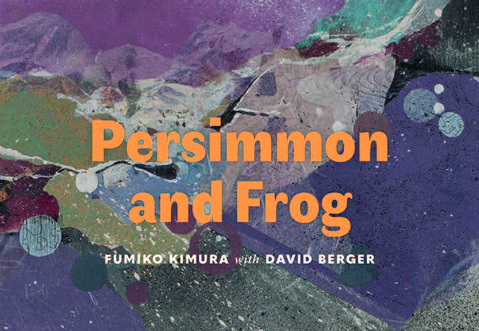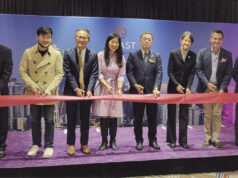In 2014, I had visited Tacoma artist Fumiko Kimura in order to profile her for a retrospective exhibition at Tacoma Community College. Kimura’s story and artistic journey fascinated me. When I met her, she was a Kibei-Nisei artist in her 80s. Last year, she celebrated her 90th birthday. She is a Kibei who did not experience wartime incarceration, who began her professional life as a chemist before transitioning into artmaking, who pursued an artist’s life successfully in addition to marriage and motherhood, who combined Western and Japanese art making techniques freely, and who co-founded the Puget Sound Sumi Artists Association. All of these paths represented stories that are underrepresented in Japanese American history, and I wanted to know more.
Just before the shelter-at-home orders descended in Washington State in March 2020, I was fortunate enough to pick up a book by Fumiko Kimura. It was a book I had been waiting six years to read. In collaboration with Seattle author and artist David Berger, Kimura has published a book which is part autobiography, part artistic statement, partial catalog of her lifetime’s work. The book is titled Persimmon and Frog: My Life and Art, A Kibei-Nisei’s Story of Self-Discovery. Published locally and designed and produced beautifully by Seattle’s Chin Music Press, it includes personal photographs and journal entries, reproductions of her significant artworks, and the artist’s own voice. It’s an honest and intimate look at this artist’s life, compiled from Kimura’s diaries, interviews, and writings.
The book is divided into three main parts: “Life,” “Art,” and “Life, Again.” In “Life,” Kimura reaches into her childhood, beginning with her 1929 birth in Rexburg, Idaho, and then early years in Gardena, California. At ten, she suffered major burns from a household accident lighting a stove. After she recovered in 1940, she and her siblings traveled with her parents to Japan for a family visit. Unfortunately, her mother contracted tuberculosis and was not allowed back into the United States. Thus, Kimura (then Takahashi) spent ages 10-17 in Japan, learning to acculturate there and speaking and writing mostly Japanese. She remembers eating grasshoppers in Japan during the war years, as well as the rice gruel that her grandmother made for her. The depictions of life in wartime Japan for a child are remarkably clear and detailed.
Kimura’s mother was determined that her oldest daughter and her siblings would return to America, and sent Kimura and her younger brother George back alone by ship, arriving in San Francisco when Kimura was 17. Kimura’s personal photographs are welcome additions here, including a baby portrait, class pictures from Japan, and even a picture of Kimura and her younger brother when they arrived back in the United States. Journal entries translated from Japanese are included, along with Kimura’s sometimes rueful reflections on them.
Upon returning to the United States, Kimura and her brother lived with her uncle, Shuichi Fukui, in Tacoma. (Side note: As someone who studies Tacoma’s Japanese American history, I was surprised to learn of Kimura’s family connection here. Fukui was a prominent member of Tacoma’s Japanese American community before and after World War II.) The autobiography section continues with Kimura’s education in Tacoma. Shortly after she arrived, she graduated from Stadium High School, and then entered the College of Puget Sound in the early 1950s.
Though many Nisei women were struggling with re-entry after their incarceration, making pragmatic career choices such as being domestic workers or secretaries, Kimura’s mother had written to her brother, asking that Kimura be allowed to continue on with her education. Fukui agreed. Kimura met her husband while attending college. Kimura’s reflections on her marriage and her children are both tender and surprisingly candid. Kimura’s decision to return to school and pursue an artistic career as a married woman is also bracing to read, as is her pained and heartfelt reflections on one of her sons’ unexpected death.
The second section, “Art,” places art literally at the center of the book and contains first a representative sampling of Kimura’s artwork. Readers can first leaf through about 20 paintings, noting the changes in method, composition, materials, and style over 5 decades of Kimura’s artistic work. The captions often contain Kimura’s remarks about the composition or subject. A 2017 composition is a combination of ink blots and line sketches of birds and grasshoppers. “These are my friends, the ones I encounter on my walks,” reads the caption.
In a subsection following the retrospective, Kimura reflects on the artistic “Themes, Series, and Projects” that she has gravitated towards over the years. Fans of Pacific Northwest art will enjoy reading about Kimura’s relationship with Japanese American artist Paul Horiuchi. She explores her deep connection to the Northwest landscape in her “Clearcut Series” description, describing her reaction on seeing a clear-cut forest for the first time. She discusses her teaching of Sumi-e painting and the creation of her book Painting in Sumi. She also covers the “Enso painting” themes: the use of a simple circle “in one fluid stroke,” as well as the Japanese aesthetics and concepts of wabi-sabi (beauty in imperfection and simplicity) and ma (space, interval, emptiness). Artists will also appreciate her discussion about her use of color, abstraction, calligraphy, and the influence of other artists.
In the shortest and final section of the book, “Life, Again,” Kimura reflects on her goals and lessons as an artist, on the death of her husband, and the spirit of exploration which continues to guide her work and life to this day. Her collaborator David Berger, a writer and artist himself, wrote a few haibun in response to Kimura’s narrative and memoir, which are included near the end of the book.
Yet Kimura’s deep and quiet senses of joy and exploration linger after one has finished reading.“My studio is again in the house,” Kimura concludes near the end of the book. “I am free to fully do what I need to do for the rest of my life.”






